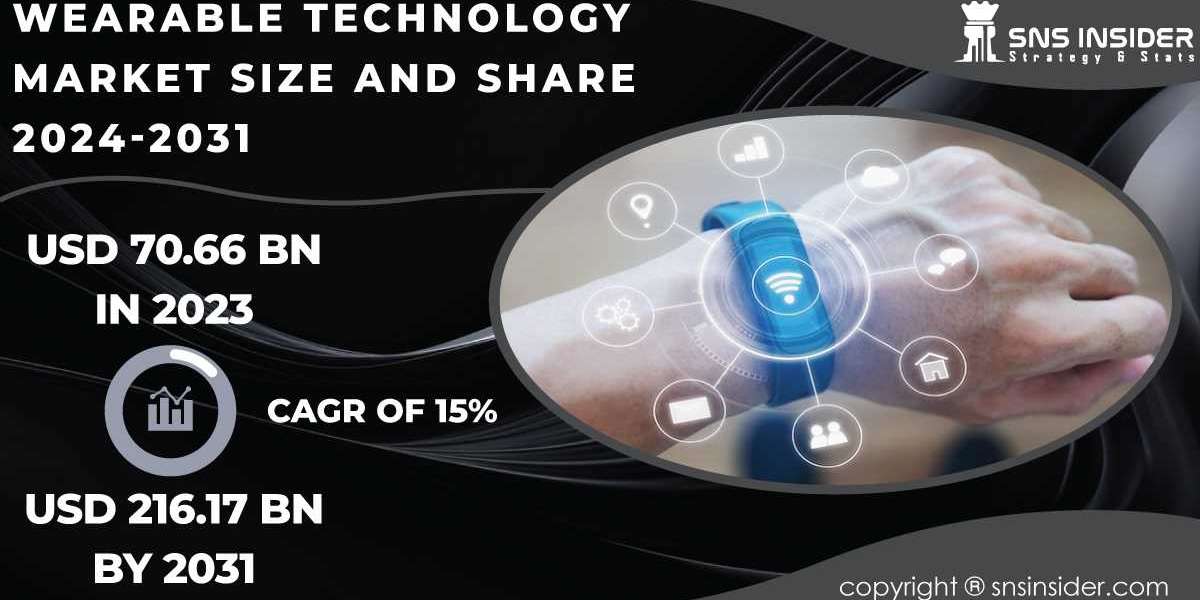Wearable Technology 2024
Wearable technology has emerged as one of the most transformative advancements in modern innovation, seamlessly integrating digital functionality into everyday life. These smart devices, designed to be worn on the body, range from fitness trackers and smartwatches to augmented reality glasses and even smart clothing. They empower users by providing real-time data, enhancing communication, and improving health monitoring. As the Wearable Technology Market Trends indicate, this industry has experienced rapid growth, driven by evolving consumer preferences, technological advancements, and the rising adoption of Internet of Things (IoT) devices.
Wearable Technology Market was valued at USD 62.5 billion in 2023 and is expected to reach USD 198.8 billion by 2032, growing at a CAGR of 13.73% from 2024-2032.
The Evolution of Wearable Technology
The journey of wearable technology has been one of continuous innovation. In its early stages, wearable devices were primarily focused on health and fitness tracking. Devices like pedometers and heart rate monitors were popular among fitness enthusiasts. However, with advancements in miniaturization, connectivity, and artificial intelligence, wearable technology has evolved to include devices capable of complex functions such as ECG monitoring, virtual reality experiences, and voice assistance.
Modern wearable devices combine style and functionality, catering to a broader audience. Smartwatches, for instance, have become versatile tools that combine communication, health tracking, and productivity features. Similarly, wearable health devices are now used in medical fields for continuous glucose monitoring, sleep analysis, and remote patient care, showcasing their potential in improving quality of life.
Applications Across Industries
The versatility of wearable technology has led to its adoption across various industries beyond personal health and fitness. In healthcare, wearable devices are revolutionizing patient care by enabling remote monitoring and early diagnosis of chronic conditions. This application is particularly valuable in managing diseases like diabetes, where continuous glucose monitoring can significantly improve patient outcomes.
In the workplace, wearables are enhancing safety and productivity. For example, smart helmets and vests equipped with sensors are used in construction and mining to monitor workers’ health and detect potential hazards in real-time. Meanwhile, enterprises are leveraging augmented reality glasses to provide remote assistance and improve training processes.
The entertainment and gaming industries have also embraced wearable technology. Virtual reality headsets and haptic devices offer immersive experiences that redefine the way people interact with digital content. Additionally, wearable devices are gaining traction in fashion, where smart textiles are being used to create clothing with embedded sensors for temperature regulation or activity tracking.
Market Drivers and Growth Factors
Several factors are propelling the growth of the wearable technology market. One of the primary drivers is the increasing health awareness among consumers. People are investing in wearable devices to monitor their fitness levels, track vital signs, and achieve wellness goals. The integration of advanced sensors and AI-powered analytics has made these devices more accurate and user-friendly, further boosting their appeal.
The rising adoption of 5G technology is another significant growth factor. With faster and more reliable connectivity, wearable devices can provide real-time data synchronization and seamless communication, enhancing the overall user experience. Additionally, the proliferation of IoT and smart home ecosystems has created new opportunities for wearable technology to interact with other connected devices, such as thermostats, lighting systems, and security cameras.
Challenges and Future Outlook
Despite its numerous benefits, the wearable technology market faces challenges such as data privacy concerns and battery limitations. As these devices collect sensitive health and location data, ensuring robust security measures is essential to protect users from potential breaches. Additionally, battery life remains a critical concern, particularly for devices that require constant monitoring or high-performance features.
Looking ahead, the future of wearable technology is promising. The integration of machine learning and edge computing is expected to make these devices more intelligent and efficient. Innovations in flexible electronics and sustainable materials will likely lead to the development of more comfortable and eco-friendly wearables. Moreover, advancements in medical-grade sensors and remote monitoring capabilities will further expand the role of wearable technology in healthcare.
Conclusion
Wearable technology has transformed from niche gadgets to indispensable tools that enhance personal, professional, and medical experiences. With continuous advancements and widespread adoption, the wearable technology market is poised for remarkable growth in the coming years. By addressing challenges such as data security and energy efficiency, this industry will continue to redefine how people interact with technology, making it an integral part of modern living.
Contact Us:
Akash Anand – Head of Business Development Strategy
info@snsinsider.com
Phone: +1-415-230-0044 (US) | +91-7798602273 (IND)
About Us
SS Insider is one of the leading market research and consulting agencies that dominates the market research industry globally. Our company's aim is to give clients the knowledge they require in order to function in changing circumstances. In order to give you current, accurate market data, consumer insights, and opinions so that you can make decisions with confidence, we employ a variety of techniques, including surveys, video talks, and focus groups around the world.
Read Our Other Reports:
Reconciliation Software Market Size














